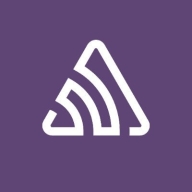

Sentry and Grafana are popular tools for application monitoring. Sentry offers robust error tracking, while Grafana excels with advanced visualization capabilities. Grafana has a slight edge due to its extensive visualization options, which provide more detailed insights.
Features: Sentry is praised for efficient error tracking, seamless integrations, and rapid debugging. Grafana is favored for comprehensive visualization, multi-source data integration, and flexible dashboards.
Room for Improvement: Users suggest Sentry could improve alert customization, documentation clarity, and enhance user experience. For Grafana, areas needing enhancement include simplifying setup, expanding alerting capabilities, and improving user experience.
Ease of Deployment and Customer Service: Sentry users generally find deployment straightforward and appreciate responsive customer support. Grafana's deployment can be more complex, but users value the support available through extensive community forums.
Pricing and ROI: Sentry users find the pricing model reasonable for the value delivered, seeing a quick ROI with faster issue resolution. Grafana's pricing is considered fair for comprehensive monitoring, with significant ROI seen through enhanced data comprehension.


Grafana is an open-source visualization and analytics platform that stands out in the field of monitoring solutions. Grafana is widely recognized for its powerful, easy-to-set-up dashboards and visualizations. Grafana supports integration with a wide array of data sources and tools, including Prometheus, InfluxDB, MySQL, Splunk, and Elasticsearch, enhancing its versatility. Grafana has open-source and cloud options; the open-source version is a good choice for organizations with the resources to manage their infrastructure and want more control over their deployment. The cloud service is a good choice if you want a fully managed solution that is easy to start with and scale.
A key strength of Grafana lies in its ability to explore, visualize, query, and alert on the collected data through operational dashboards. These dashboards are highly customizable and visually appealing, making them a valuable asset for data analysis, performance tracking, trend spotting, and detecting irregularities.
Grafana provides both an open-source solution with an active community and Grafana Cloud, a fully managed and composable observability offering that packages together metrics, logs, and traces with Grafana. The open-source version is licensed under the Affero General Public License version 3.0 (AGPLv3), being free and unlimited. Grafana Cloud and Grafana Enterprise are available for more advanced needs, catering to a wider range of organizational requirements. Grafana offers options for self-managed backend systems or fully managed services via Grafana Cloud. Grafana Cloud extends observability with a wide range of solutions for infrastructure monitoring, IRM, load testing, Kubernetes monitoring, continuous profiling, frontend observability, and more.
The Grafana users we interviewed generally appreciate Grafana's ability to connect with various data sources, its straightforward usability, and its integration capabilities, especially in developer-oriented environments. The platform is noted for its practical alert configurations, ticketing backend integration, and as a powerful tool for developing dashboards. However, some users find a learning curve in the initial setup and mention the need for time investment to customize and leverage Grafana effectively. There are also calls for clearer documentation and simplification of notification alert templates.
In summary, Grafana is a comprehensive solution for data visualization and monitoring, widely used across industries for its versatility, ease of use, and extensive integration options. It suits organizations seeking a customizable and scalable platform for visualizing time-series data from diverse sources. However, users should be prepared for some complexity in setup and customization and may need to invest time in learning and tailoring the system to their specific needs.
Sentry is a tool for monitoring web and application performance, tracking errors, processing request times, and managing user data access.
Developers integrate Sentry with web and application environments to capture front-end and back-end errors, utilize error logs, trace requests, and observe metrics without real-time production access. Sentry's use extends to monitoring internal applications, leveraging CyberArk PAM integration, deploying notifications, and detecting silent failures. Users benefit from detailed error and performance reports, contextual cause-stack information, and real-time breakdowns. There is room for improvement, as users desire refined integration and administrative settings, enhanced alert policies, and more customization in event metrics.
What are Sentry's most important features?Sentry is implemented across industries ranging from tech startups to large enterprises. These organizations use Sentry to enhance application reliability, track performance, and secure user data within protected environments. Integration with CyberArk PAM ensures secure deployment. Organizations find Sentry useful for monitoring internal applications, efficiently processing request times, and tracing changes in production without direct access.
We monitor all Application Performance Monitoring (APM) and Observability reviews to prevent fraudulent reviews and keep review quality high. We do not post reviews by company employees or direct competitors. We validate each review for authenticity via cross-reference with LinkedIn, and personal follow-up with the reviewer when necessary.